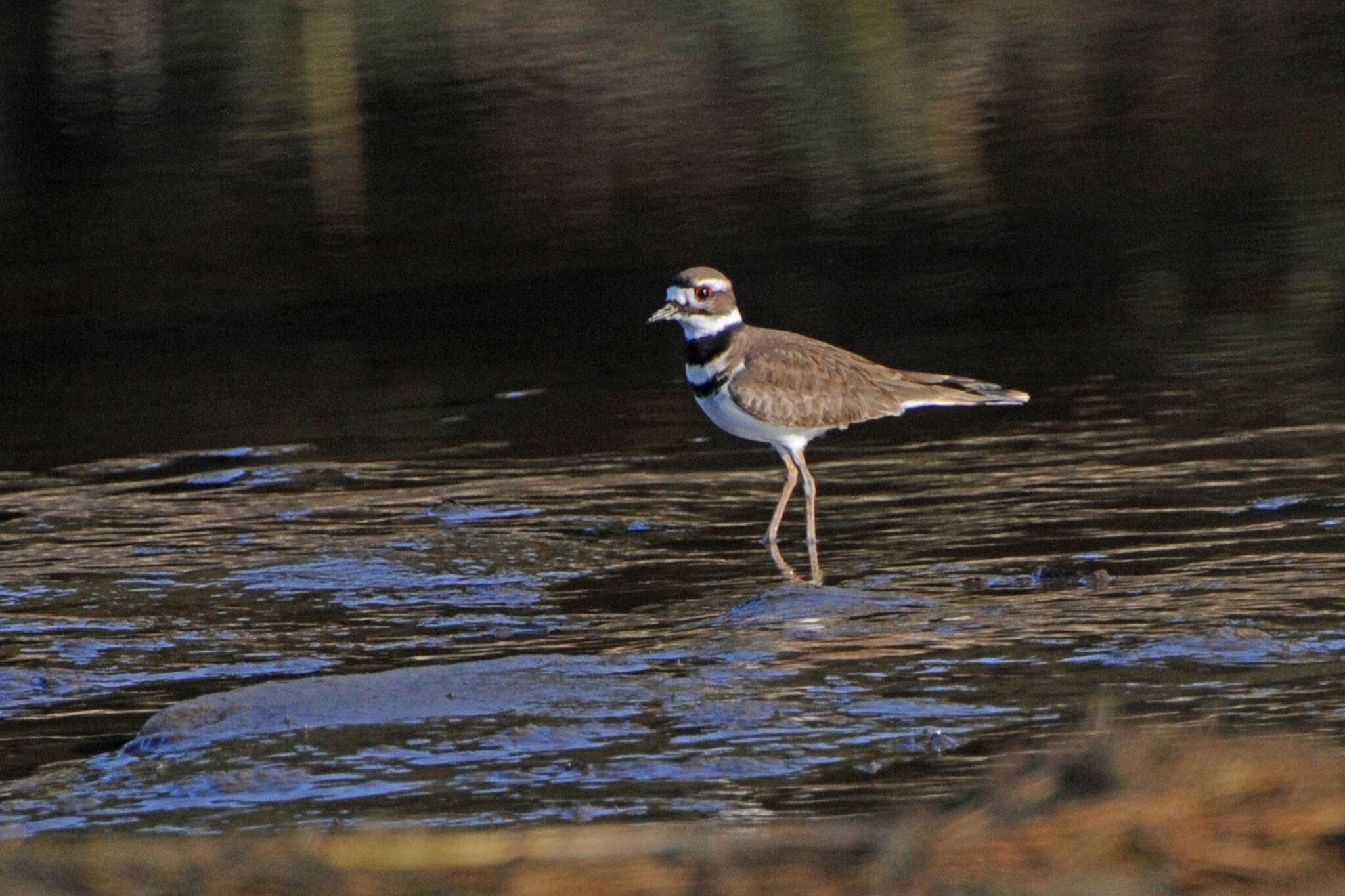By Mary F. Willson
For the Juneau Empire
On Christmas day, a little group of friends walked along the airport dike trail. Loose snow had drifted over the trail in places and low streamers of more snow were whisked over the meadow by capricious breezes. The shallow lagoon in front of the small shelter was covered with ice. On the ice I saw two killdeer, rather forlornly peering through the ice, unable to reach any bits of food below. Hungry and hopeful, they spent some minutes there, in vain.
Soon thereafter, I was told that killdeer are not uncommon over in the Fish Creek area, so of course I went over to look. In the parking lot, I met someone coming off the trail who reported seeing lots of killdeer out on the west side of the berm leading to the “island.” But — again, of course — by the time I got out there, they were not to be seen.
These observations made me think about what shorebirds might occur here in winter and the kinds of places they might be found. Consulting with some experienced birders, I used the Juneau checklist to learn which species are most likely to be seen and which are less likely. Occurrences vary from year to year, of course, but the list serves as a starting place.
[All the birds I’ve known: Reviewing rescued raptors]
“Shorebirds” include the sandpipers, plovers, godwits, and oystercatchers, earning their common collective name from their frequent use of shorelines outside of the breeding season, on migration and in winter. That’s when the species often overlap in their habitat use and bird watchers are mostly likely to see them. Nesting habitats are varied, including wet tundra, dry alpine tundra, bogs, marshes, grassy meadows, and the birds are then spread out over the landscape. All of them forage primarily for invertebrates.
Sandpipers on a Stormy Day in Juneau.wmv from Bob Armstrong on Vimeo.
(Amixed-species group at Tee Harbor. Video by Bob Armstrong).
The rock sandpiper is reported to be common in Juneau in winter: It forages on gravelly and rocky beaches and headlands, but also on intertidal sand and mud flats. This species has been studied in upper Cook Inlet, where it is the northernmost wintering shorebird in North America. It feeds primarily on the small clam Macoma baltica, picked from the sandy-muddy flats. In midwinter, its daily energy requirements were estimated to be more than six times the basal metabolic rate—that’s a lot of clams! The subspecies in Cook Inlet has faster prey-handling times and higher rates of energy intake and of shell disposal than the more southerly subspecies.
The next four species are said to be uncommon or rare in Juneau in winter:
Dunlin: It is found chiefly on muddy estuaries on the coast in winter, but also on other wetlands. It eats invertebrates picked from sand and mud flats. Juveniles are apparently more vulnerable than adults to predation and to severe weather.
Black turnstone: In winter, it’s mostly on rocky shores and reefs, headlands, but also on deltas and mudflats; it may attend late runs of anadromous fish in streams. They feed on intertidal invertebrates in winter, including lots of small limpets.
Killdeer: In all seasons, it is found mostly in open habitats including mud flats, gravel bars, and wet grassy fields. Killdeer eat a variety of terrestrial and shallow-water invertebrates, including crustacea, worms, larval moths, and sometimes small vertebrates (e.g., dead minnows). Killdeer in some areas are reported to forage quite actively on moonlit nights, while reducing activity on the following day; this pattern reduces exposure to daytime predators such as falcons.
Wilson’s snipe: Wintering habitats include marshes, swamps, wet meadows, and wet fields; I also see wintering snipe along rivulets in the forest (e.g., mountainside tributaries of Gold Creek). It often probes the substrates for prey, including larval insects and earthworms, and also eats small molluscs and crustacea. At least in some regions, male snipe put on more fat in winter than females, in preparation for their early northward migration; females migrate later, when food is more available on the journey.
Other species are thought to be occasional and incidental in Juneau in winter: greater yellowlegs, semipalmated plover, spotted sandpiper, long-billed dowitcher, ruddy turnstone, surfbird, and sanderling.
Good places to look for any of these wintering birds include Eagle Beach, Sheep Creek, Fish Creek, lower Switzer Creek, Salmon Creek and northward along Gastineau Channel, Mendenhall wetlands. Boaters might check the sea stacks and rocky reefs, which are less accessible to observers.
Many thanks to some experienced bird observers for helpful consultation!
• Mary F. Willson is a retired professor of ecology. “On the Trails” appears every Wednesday in the Juneau Empire.

